A short and useful guide book of Catania to discover its ancient, medieval and baroque soul. Information about Palaces, monuments, churches and museums you should not absolutely miss visiting….and moreover , gastronomy, shopping, tours to try and events and sweet life to live.
City of Catania
Catania, capital of the province, has about 300.000 inhabitants, and it is the second largest city in Sicily. It lies on a spectacular strip of high , rocky, indented and dark coastline, made of Etna black basalt.

The city is situated on the east coast of the island, on a plain territory at the foot of Etna volcano, half way between Syracuse and Messina. In the past, Catania was destroyed by volcanic eruptions and earthquakes seven times.
The most devastating events happened in 1669 and in 1693. After the last earthquake, the city was rebuilt and now Catania is a modern city with a with a well-proportioned geometric plan. The typical city tour starts from Piazza Duomo, from the Cathedral, where the relics of Saint Agatha’s, the city patron saint, and of Vincenzo Bellini are contained. A fountain with an elephant or “Liotru”, which is the city symbol, stands in the center of Piazza Duomo. This is a lava-stone statue that dates back to the Roman age. The city hall, designed by Vaccarini and Chierici Palace , designed by Alonzo di Benededetto, also stand in Piazza Duomo. On the left there is Porta Uzeda, built in 1695 in honor of the Spanish Viceroy Paceco de Uzeda.

The background of the picturesque fish market is the wonderful Amenano fountain, designed by Tito Angelini. Going along via Etnea, you will see Piazza Università, where the University Palace and San Giuliano Palace stand. Going on, you will see the Collegiata Basilica, built in 1768. Here some works by Sciuti and Sozzi are kept. Nearby there are the famous Four Corners of Catania, where via Etnea intersects Via San Giuliano. On the left there is Minoriti palace, seat of the Province and of the Prefecture, and, not far from it, Minoriti church, that was designed by Battaglia.

Going on with the tour through the magnificent façades of the palaces, built in the 18th century, you will get to Piazza Stesicoro, where you will see the Monument to Vincenzo Bellini, the Roman Amphitheater, that dates back to the II century AD, and San Biagio Church, built in the place where Saint Agatha was martyrized. Going up Via Etnea, you will see the wonderful Palazzo delle Poste and Villa Bellini. The large garden of the Villa is decorated with fountains, secular trees and statues of famous people who were born in Catania, such as Giovanni Verga. The city has dedicated one of the most beautiful squares in Catania to this famous veristic writer. Moreover, the sculptor Carmelo Mendola has also designed a fountain which reproduces the tragic shipwreck of Provvidenza described in “I Malavoglia”.

Another noteworthy fountain is in Piazza Giovanni XXIII, near the Railway Station: It represents Proserpina’s rape and it was designed by the sculptor Giulio Moschetti. Surely, You must not miss Ursino castle, in Piazza Federico II, which houses the interesting Civic Museum.

One of the best things you can also do is a walk along Via dei Crociferi, enriched with magnificent churches in baroque style and palaces of the 18th century: going along this street, you will see the arch, San Benedetto church, San Francesco Borgia church , the ex-Jesuit college, which hosted the Art High school and San Giuliano church. One of the most wonderful works in baroque style is certainly Biscari Palace, with its beautiful frescoed rooms, which are still used to arrange both luxurious private parties and wedding parties.
Palaces and Monuments
BOTANIC GARDEN
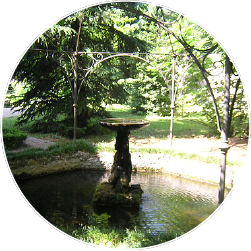
This beautiful garden covers an area of 16.000 square meters, where there are also some neoclassical buildings. Inside these buildings , which are also used as greenhouses, there are a lot of species of rare, exotic, aquatic plants as well as plants of Sicilian origin.
BELLINI GARDEN
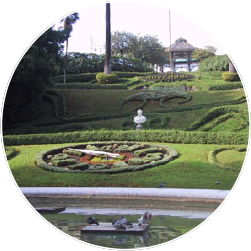
It is the favorite place where Catania inhabitants love relaxing, going for a walk, or watching the wonderful view that spreads from the city to Mount Etna. The garden covers an area of 70.000 square meters and it is composed of avenues, small squares, small bridges, flower-beds and fountains. Some statues representing the seven arts are situated at the main entrance to the garden.
PIAZZA DUOMO
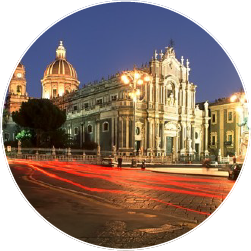
It is the heart of Catania with its symbolic monument in the center: the fountain with the elephant . The city cathedral with the Chapel of Sant’Agata, where a precious treasure is kept, and Palazzo degli Elefanti , seat of the town hall, look out onto this square. Via Etnea, the most famous street in Catania, runs from there. Here you will see beautiful buildings in baroque style with their lava dust façades and plenty of shops and confectioners’.
THE ELEPHNAT… U LIOTRU
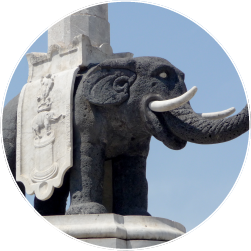
The elephant has been the symbol of the city since 1200. It is in the center of Piazza Duomo and it is a lava stone statue dating back to the Roman age. It stands on a modern structure designed by Vaccarini in the eighteenth century. According to a legend, this animal has become the symbol of the city because pigmy elephants lived there in past times and they protected the ancient inhabitants of the city by chasing wild animals.
URSINO CASTLE
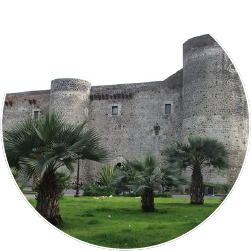
It is the only medieval building survived to the devastating power of nature and it is almost intact today. It was built around 1240 to protect the city from the sea and it was also used as a royal residence and as a prison. It has been the seat of the Civic Museum since 1934 and it houses some paintings, sculptures, bronzes and ceramics from different ages.
BELLINI OPERA HOUSE
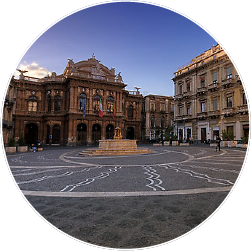
This magnificent theater was opened in 1890 with the performance of the famous opera “Norma”, composed by Bellini. The style of the theatre recalls the one of the Opera in Paris: a lot of wrought iron in the portico, a large hall with four tiers of boxes and a gallery, corridors and frescoed ceilings.
VIA DEI CROCIFERI
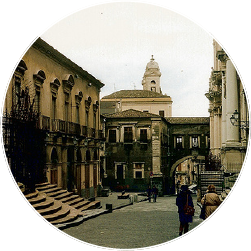
Triumph of the eighteenth-century baroque style, this street is one of the most fascinating and it counts an endless line of magnificent religious buildings, such as San Benedetto church, the Jesuits church and San Giuliano church.
CHURCHES AND MUSEUMS
DOME – CHAPEL OF SANT’AGATA
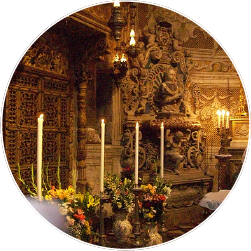
The Dome of Catania was built in XII century, but it was totally rebuilt in 1600, after the earthquake and the eruption which devastated most part of the city. The Chapel of Sant’Agata, the city patron saint, is inside the Cathedral, and it is the place where her precious treasure is kept.
SAN GIULIANO CHURCH
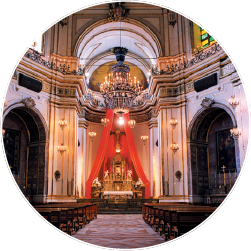
It is considered one of the most beautiful churches in Catania. It has a beautiful dome enclosed in a polygonal open gallery and its interior is embellished with marble decorations and a golden-bronze altar. The church dates back to the beginning of the XVIII century and was designed by Vaccarini.
SAN NICOLA CHURCH
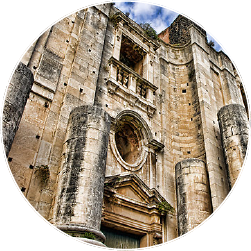
This magnificent church was first built in 1687, but work was interrupted because of the 1693 earthquake that destroyed most of the city buildings. Later, the construction began again and the church was completed. The large spaces inside the church are noteworthy: the interior with its three naves is 105 meters wide and the dome is 62 meters high.
BENEDICTINE MONASTERY
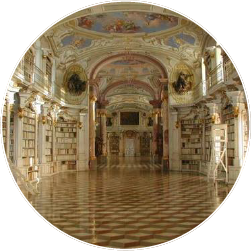
The Benedictine Monastery, one of the largest in Europe, is more similar to a royal palace than to a religious building, an aspect that is probably due to the close links between the Benedictine monks and the Catania aristocracy. In the eighteenth century it was one of the most important cultural centers both in Catania and in Sicily, attracting lots of visitors who were amazed by the luxury and the magnificence of the building. It is now the Faculty of Literature and Philosophy for the University of Catania.
BASILICA OF SAN NICOLÒ L’ARENA
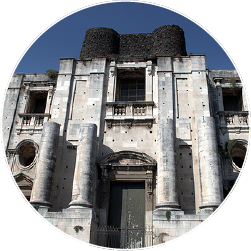
This magnificent religious building, next to the Monastery, dates back to the end of the seventeenth century and is still partly unfinished. San Nicolò l’Arena was built reproducing the model of basilicas in Rome, according to the the Benedictine monks’ wishes. The interior of the church is almost totally bare.
Museum houses in Catania that are dedicated to the famous personalities who were born in this city.
EMILIO GRECO MUSEUM
This museum, opened in 1994, houses about 1500 graphic works by the Catania artist: engravings, lithographs and etchings, including the famous “Commiati”.
GIOVANNI VERGA HOUSE MUSEUM
This eighteenth-century palace, situated in Via Sant’Anna, was Giovanni Verga’s house during the last twenty years of his life. Inside the house there are many objects that belonged to the famous veristic writer. The library has a great value as it contains almost 3000 volumes by various authors such as Deledda, Tolstoy, Gorky, Flaubert and Dumas.
BELLINI CIVIC MUSEUM
It is in the house where the famous composer lived before moving to Naples. The museum spreads over a route that shows Vincenzo Bellini’s private and artistic life. The museum also houses some original musical manuscripts that are extremely interesting to see because they were signed by the artist himself.
BISCARI MUSEUM
The wonderful Biscari Palace, one of the most beautiful buildings in the city, was the ancient residence of the prince Biscari. Inside, you can admire frescoed halls, galleries, archaeological finds, statues, marbles and other artistic wonders.
GASTRONOMY
The Catania cuisine, that is extremely tasty, offers a range of typical local delicacies that are often found throughout Sicily. Our journey begins by discovering Catania tastes with a very famous dish: Pasta alla Norma

It is a main dish, generally made with maccheroni pasta, with tomato sauce, fried aubergines, basil and plenty of grated ricotta salata cheese. The recipe is named after the composer Vincenzo Bellini, who was born in Catania and composed the opera Norma, which inaugurated Massimo Bellini theater in 1890.

There are also rice arancini , one of the most common recipes used in delicatessens, fried-food shops and food shops that offer them in a thousand varieties, mostly filled with minced meat, and sometimes with mushrooms and pistachio nuts. Catania’s “arancini” are different to the ones made in other Sicilian cities as they have a long shape, that makes them more similar to a cone. Another snack you will always find not only in fried-food shops but also in lots of restaurants in Catania are crespelle: soft fritters full of ricotta cheese or anchovies.

“Scacciate” are another typical local recipe. They are bread-dough pies, filled with local cheese such as “tuma”, anchovies and different types of vegetables.

Among fish-based recipes, you must not miss marinated “mascolini”, fresh anchovies marinated for at least 24 hours in extra-virgin olive oil and lemon juice, and “pasta with mascolini”, pasta with anchovies that are fried together with onion, peas and wild fennel.

As to cakes and desserts, one of the countless keystones of Sicilian cuisine, you can taste the best “cannoli di ricotta “, made with a crunchy pastry filled with ricotta cheese and chocolate flakes or candied fruit. Other delicacies from Catania are Saint Agatha’s olivette, cakes with green almond paste made for the traditional festival of Saint Agatha. These little cakes are linked to an ancient legend that tells the story of the city patron saint. While Roman soldiers were pursuing her, she stopped running to tie her shoe and just at that moment, a huge wild olive tree grew in front of her, hiding her from her pursuers, and offering her olives to eat.
Finally, among cakes and dessets, there are also the famous granitas, flavored with almond, lemon, coffee, or chocolate, and served with hand-whipped cream. The kiosks spread out around the city also offer special typical drinks such as lemon seltz, made with squeezed lemon, seltz and salt, and tamarind with lemon and soda bicarbonate, that is a very good aid for the digestion. As to the local wine production, you must not miss the DOC red wines that come from Mount Etna.
TOURS
MOUNT ETNA

Etna is the highest volcano in Europe: 3.330 meters high, 210 kilometers of perimeter with an overall surface area of 1600 square kilometers. A live giant that sometimes explodes, unexpectedly and violently, frightening people. The most disastrous eruption dates back to 1669, when the lava destroyed villages and harvests, people and animals, and traveled as far as Catania. In the 20th century, Etna woke up several times, threatening and sometimes destroying the area. In the 1970s and 1980s, Milo, Sant’Alfio and Randazzo were saved at the last minute. Finally, during the eruption in 1983, the lava was diverted into an artificial canal. Etna never sleeps and it is continuously active: lava comes out of its craters regularly, all along the sides of the volcano. The last eruption was at the end of 2002, when a violent eruption threatened the Rifugio Sapienza, situated at the foot of the volcano. Climbing up Etna is a unique and exciting experience. You don’t have to be a young athlete to explore the Sicilian giant: there are several types of excursions, from trekking to tourist trips on the Circumetnea train, the food and drink itinerary and mountain bike trips over the rough paths. But the most fascinating excursion is visiting the craters of Mount Etna. Once you get to the top, you can see a large part of Sicily from the Aeolian Islands to the Gulf of Augusta. The tour on the old Circumetnea train that takes you to the villages around the feet of the volcano is also extremely fascinating. Among these villages, you must not miss Randazzo, that has beautiful medieval architecture and Linguaglossa, with its characteristic buildings in lava and sand stone. If you go to Linguaglossa, we suggest visiting the Ethnographic Museum of the Etna people and, of course, the wonderful Etna Park, a fantastic green oasis that covers an area of 58.000 hectares.

The luxuriant vegetation, that grows at the feet of Etna, changes depending on the altitude: Mediterranean scrub, chestnut woods, oak and pine trees, beech and birch trees, and higher , green meadows that lead to the permanently snow-capped peak of the volcano. Love of nature is not the only reason for a trip to Etna: this area is so fertile and rich that many types of typical products of Sicilian food-and-wine connoisseurship are grown and made here. You can taste them in one of the several restaurants that you find nearby.

The whole area of Etna is well known for its wine production, especially the area near Randazzo and Castiglione di Sicilia: Etna DOC is a very strong wine, that is ideal to drink with tasty food such as “zuzzu”, a kind of gelatinous sausage made with the cartilage of pork and beef meat, that is usually served cut into cubes.
Another typical dish you can taste is “maccaruni”, homemade pasta with various types of sauce. As a second course, we suggest having lamb or kid meat. Finally, the town of Bronte is famous for its pistachio production, that is extremely fine and popular both in Italy and abroad. Around 1800, the growing of these nuts became the most important activity in this area.

Pistachio harvesting is still a long, expensive and tiring job: the plants only produce their fruit once every two years and it is not possible to pick the fruit mechanically. It must be done only by hand. There are many typical recipes in Bronte and nearby that are made with this ingredient: pasta dishes with pistachio sauce and many types of cakes made with pistachio , either crushed or as a paste.
CALTAGIRONE

Another town you must not miss is certainly Caltagirone, which is located 68 Km far from Catania and 600 meters above the sea level. This fascinating town is known all over the world for the handmade ceramics production and this job is still done by lots of craftsmen. In the course of the centuries, this really ancient art, whose origins date back to the age of Arabian rule, has always improved, maintaining the typical decoration pattern and the typical colors of Caltagirone ceramics.
EVENTS
Se avete intenzione di organizzare una vacanza a Catania in un periodo che coincide con qualcuno di questi eventi, soprattutto se in occasione della Festa di Sant’Agata, vi consigliamo di prenotare con largo anticipo un hotel a Catania.
SAINT AGATHA FESTIVAL

Catania celebrates Sant’Agata, the city patron saint, every year with three days of festivities: on 3rd, 4th and 5th February. The first day is dedicated to the offering of candles, each confraternity offers a giant “candelora” that is carried in the procession with difficulty due to its weight: some candelore weigh up to 1200 kilograms each! This first day ends with a fireworks display in Piazza Duomo.
On the second day, Catania inhabitants wear long white tunics to remember the historical night of 1126 when the Catania people left their houses in their nightshirts to meet two citizens who had come back from Constantinople with the Saint’s relics. The festival goes on with a procession carrying the statue of Sant’Agata, decorated with all the wonderful treasures that are kept in the homonymous Chapel. The procession, that lasts all day long and walks along all the city places that are linked to the saint’s martyrdom, ends late at night, when the statue (called the fercolo) returns to the Cathedral.
SWEET LIFE

Catania is so famous for its legendary nightlife not only in Sicily but all over Italy that it is right to speak about its “movida”. Even if people do not usually have dinner at midnight like in Madrid, the Sicilian city is in no way inferior to the Spanish Capital city , as to the large quantity of pubs and entertainments.
One of the most crowded meeting places is Scalinata Alessi, in the center of the university area of the city and just a short walk from Via Crociferi, where there are lots of pubs. One of them is the famous Nievski, the first pub which was opened in the city. Now there are about 120 pubs, that are always crowded and lively. Maybe, that is due to the fact that Catania is a university city where students come from all over the south of Italy. Another reason might be the “viveur” soul of its inhabitants. The reality is that Catania nightlife is so involving that it seems natural to stay out until dawn.
You can choose a large variety of entertainments: there are 25 theaters and an endless variety of clubs. You can only take your pick. You can choose between Arabic-like, hi-tech, kitsch or minimal Japanese atmospheres. The most sophisticated wine bars, where Catania rich people usually go, are a bit further out of the old city center, in Corso Italia, in the area between Piazza Europa up to the crossroads with Via Monfalcone, a modern, exclusive city area that goes as far as the seafront.
After such long walks, chats and dance, if you get hungry, you can go to the Etoile d’or, which was the first bar to be open 24 hours a day in 1977 . Now it makes about 1000 arancini a day and they are offered in many different varieties.
parte di informazioni citate in questa
guida sono ricavate da rozio.it
